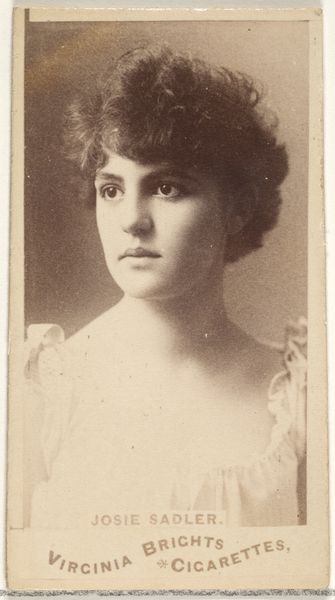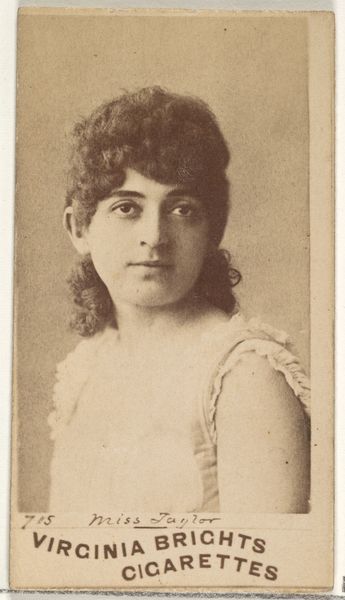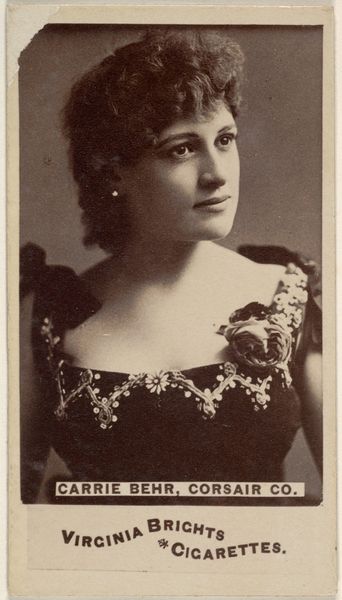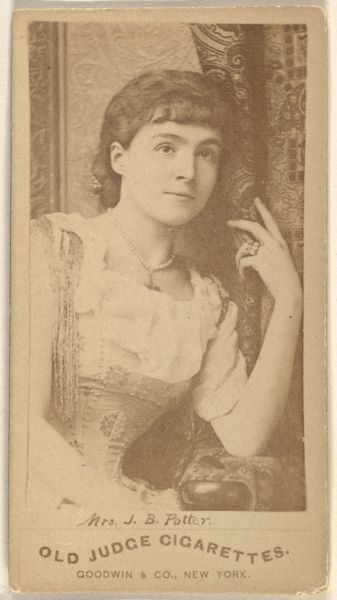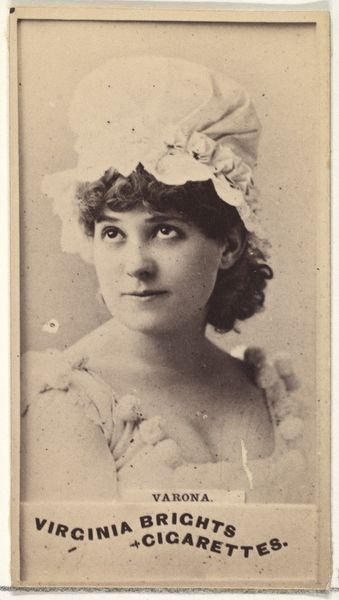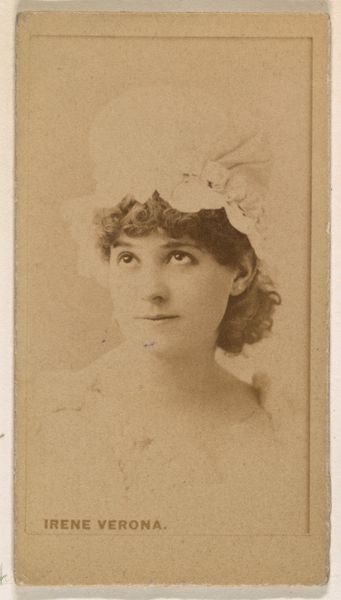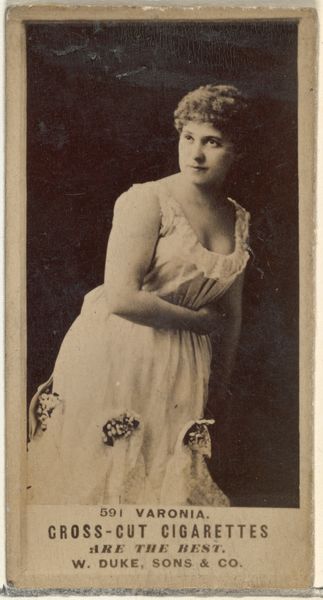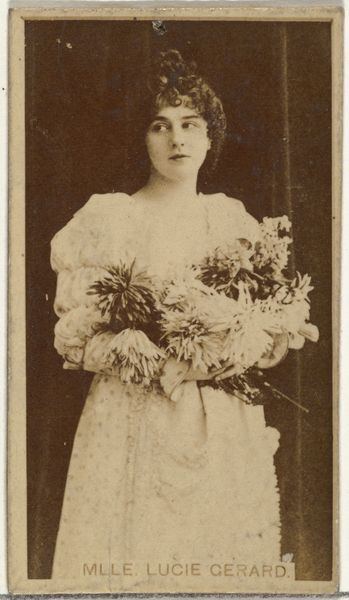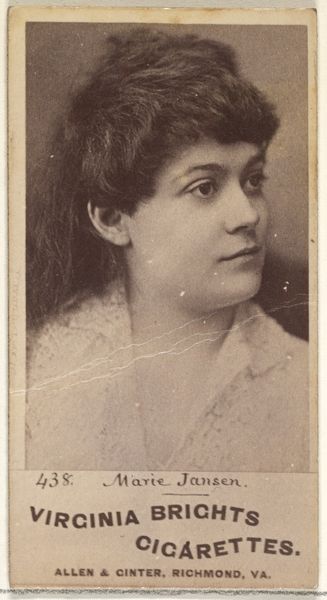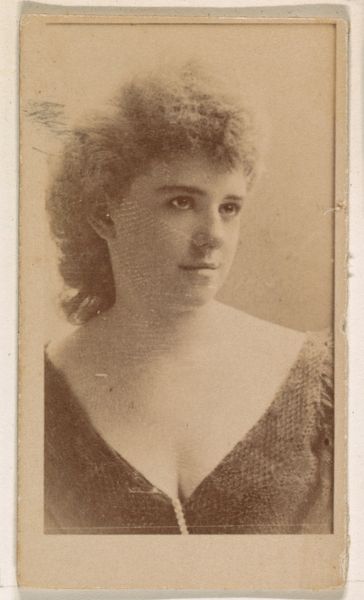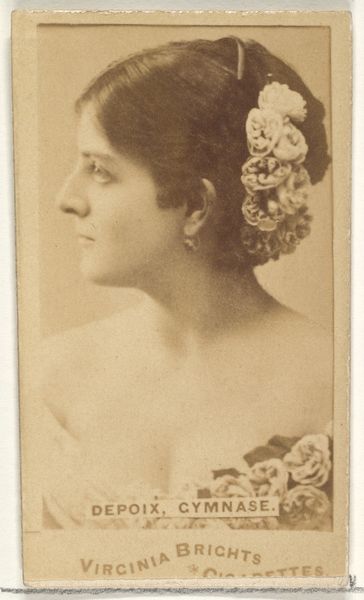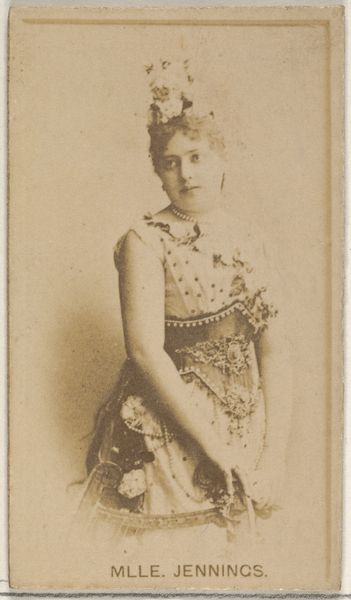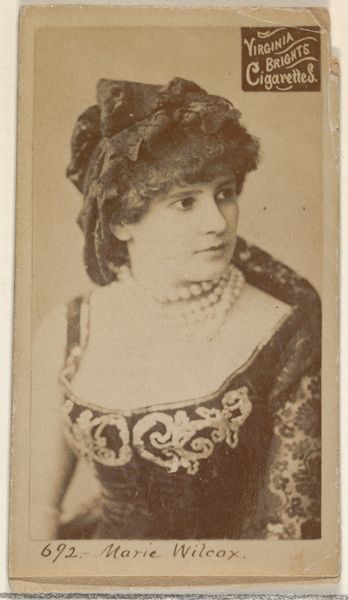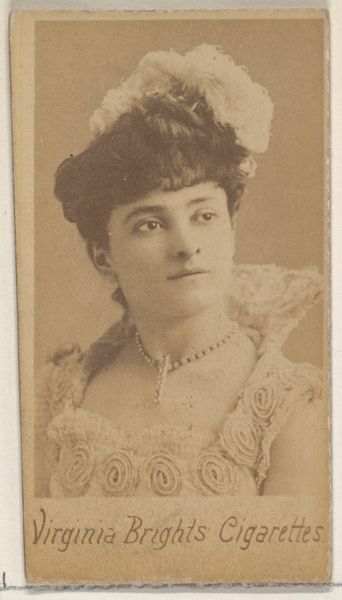
Carrie Behr, Corsair Co., from the Actors and Actresses series (N45, Type 6) for Virginia Brights Cigarettes 1885 - 1891
0:00
0:00
print, photography
#
portrait
# print
#
photography
#
historical photography
Dimensions: Sheet: 2 15/16 x 1 11/16 in. (7.4 x 4.3 cm)
Copyright: Public Domain
Editor: This is a trading card, "Carrie Behr, Corsair Co." from the Actors and Actresses series made by Allen & Ginter between 1885 and 1891. It was actually produced as an advertisement for Virginia Brights Cigarettes! It’s so fascinating to see a celebrity endorsement on what is essentially a small piece of cardstock. What strikes you most about this object? Curator: It's remarkable how this small card embodies the intersections of industry, labor, and consumption. Consider the cigarette production: tobacco farming, factory work assembling the cigarettes, printing the cards… each stage represents a different labor force and a different set of economic conditions. It isn't simply a portrait, it’s about commodification. Editor: Commodification? Curator: Exactly. This card turns Carrie Behr, an actress, into a commodity herself, marketed alongside the cigarettes. It also exemplifies the popularization of photography and printmaking during this period, shifting artistic expression towards mass production and consumerism. Are we truly seeing art here, or cleverly disguised marketing materials? Editor: That makes me rethink my initial view. It's not just a portrait, but part of a complex economic and social machine. The material itself - the card, the ink, the photograph - is less important than what they represent in this production chain. What kind of artistic traditions would have influenced its visual presentation? Curator: Japonisme certainly had a hand. But beyond that, think about the influence of advertising techniques. What were other popular forms of distribution at the time? Who consumed the cigarettes, and by extension, these cards? Considering who has access to the image is an essential perspective. Editor: So it’s about uncovering all these layers. Looking at the materials and production process helps to illuminate social and economic forces. Curator: Precisely. The seemingly simple image opens up a much larger discussion on production, consumption, and the role of art in a market-driven society.
Comments
No comments
Be the first to comment and join the conversation on the ultimate creative platform.
